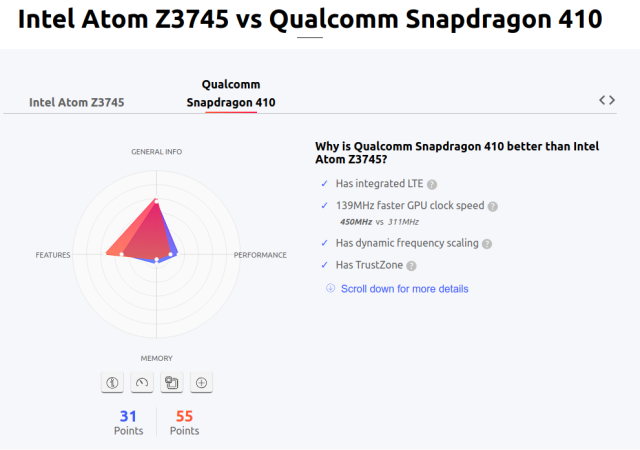atom vs snapdragon, go go go –
Intel flubbed its first entry into the tablet space — but it’s ready to try again.

Microsoft
Intel is unveiling its new “Tremont” line of ultra-low-power 10 nm CPUs today at theLinleymicroprocessor conference in Santa Clara. Intel’s presentation on the new line says that usage will “span client, IoT, and datacenter products.” It’s a little too early for a laundry list of the actual devices that will be powered by Tremont, but we do know that the new dual-screenedSurface Neois among them; itsLakefieldhybrid processor uses both high-powered Ice Lake and low-powered Tremont cores.
Tremont is the successor to last yearGoldmont Plus, andGoldmontandSilvermontbefore it. These are the lowest-powered (and frequently, least expensive) CPUs in Intel’s lineup, and consumers will generally be more familiar with them by names like Celeron and Pentium N. You could occasionally find Celeron or Pentium N processors in extremely low-end retail generic Windows PCs, but they were more frequently seen in specialty items like the bare Linux (router) build we showed off back in 2016.
Overcoming some bad history
Pentium N and Celeron were generally well received — but then there was the Atom. Intel CPUs branded with the Atom name have traditionally been on the extreme low end in both power consumption and processing performance. A few years ago, I saw that Asus made an Intel-powered Android tablet, and naively, I assumed anything x 86 would blow anything ARM out of the water, so I bought one for my son. It did not meet my unwarranted expectations; and its Atom Z 3745 performed in line with this versus.comcomparisonbetween it and its contemporaneous Qualcomm Snapdragon competitor.

Enlarge/The comparisons at versus.com should not be confused with real benchmarks; they’re synthetic comparisons of specs. My lived experience says this one, which compares Intel Atom and Qualcomm Snapdragon tablet CPUs in 2014, was pretty much on the money.
versus.com
It might seem unfair to Intel to bring up bad history from five years ago in its tablet processors, but traditionally, it’s a segment Intel has struggled to compete in. Atom CPUs tend to fall behind their ARM-based competition in power consumption and performance. Cherry Trail tablet CPUs followed my son’s ill-fated Bay Trail in 2015 – and didn’t do much better in the market — but 2016 ‘s Willow Trail wasCanceledentirely. 2017 and 2018 ‘sGoldmont Plus“tock” also didn’t produce any tablet processors, so Intel’s belated return to the ultra-low-power scene with Tremont is big news.
Performance and efficiency
-
Translation? To excel in its diverse target markets, Tremont must be small, fast, and efficient.
Intel Corporation
-
This overview of Tremont gives you some idea what to expect in terms of improvement classes.
Intel Corporation
Intel has an undeniable talent for impenetrable charts, and this one’s no exception. The “x axis” is actually a large collection of individual benchmarks; Intel drew a median line across them to come up with a 30% aggregate performance improvement over Goldmont Plus.
Intel Corporation
Tremont aims to change Intel’s history in the ultra-low-power space for the better, and it does so with a tight focus on specific design goals. In order to compete strongly with ARM products like Snapdragon in tablet, phone, IoT, and other extreme low-power target markets, Tremont ramped up its Instructions Per Clock (IPC) efficiency significantly from Goldmont Plus, improved its power management, and took aim at the highest possible single-threaded performance. It also offers new x 86 instructions that weren’t available in 2016 Goldmont’s Plus line.
-
Tremont’s Core class branch prediction features long histories and no penalties, but Intel’s playing it cagey so far on whether, or how, it eludes Core-class speculative execution vulnerabilities.
Intel Corporation
-
Tremont’s front-end architecture features 4-wide allocation and 6-wide out of order instruction decode queues.
Intel Corporation
Tremont aims at higher single-threaded performance with better branch prediction, wider architecture, and deeper cache.
Intel Corporation







GIPHY App Key not set. Please check settings